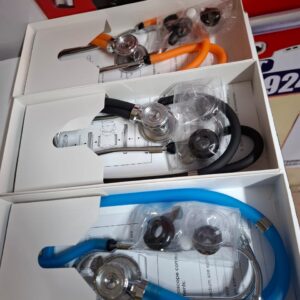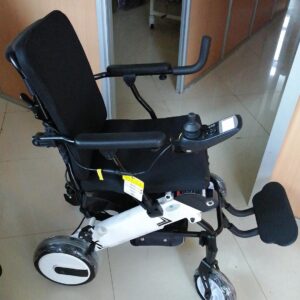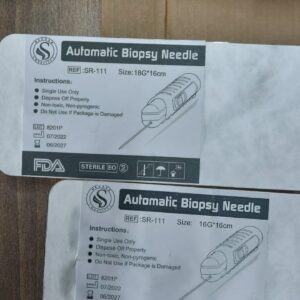Subtotal: KSh 1,500.00
Uncategorized
Vital sign monitor parameters
Vital signs can help healthcare providers detect or monitor medical problems, and show a patient’s progress toward recovery.
Some common vital signs monitored by a patient monitor include:
-
TemperatureA healthy adult’s temperature typically ranges from 97.8°F to 99.1°F (36.5°C to 37.3°C).
-
PulseA healthy adult’s pulse typically ranges from 60 to 100 beats per minute.
-
Blood pressureA healthy adult’s blood pressure typically ranges from 90/60 mmHg to 120/80 mmHg.
-
Respiration rateA healthy adult’s respiration rate typically ranges from 12 to 18 breaths per minuteFOUND AT MEDSTOCK SUPPLIES AT AFFORTABLE PRICES
KSh 58,000.00 KSh 60,000.00
🩺 Vital Sign Monitor Parameters
A Vital Sign Monitor is an essential medical device used in hospitals, clinics, and home care settings to continuously or intermittently monitor a patient’s key physiological indicators. These monitors provide real-time data that help healthcare providers assess a patient’s health status and make informed clinical decisions.
⭐ Core Parameters Measured by a Vital Sign Monitor
- Heart Rate (HR) / Pulse Rate
- 📍 Measured in beats per minute (bpm)
- Indicates cardiac function and circulatory health.
- Blood Pressure (BP)
- 📍 Includes systolic and diastolic pressure, measured in mmHg
- Essential for monitoring hypertension, hypotension, and circulatory issues.
- Oxygen Saturation (SpO₂)
- 📍 Measured as a percentage (%)
- Indicates the level of oxygen in the blood via a pulse oximeter.
- Respiratory Rate (RR)
- 📍 Measured in breaths per minute
- Monitors lung and respiratory system efficiency.
- Temperature
- 📍 Measured in °C or °F
- Detects fever, hypothermia, or infection.
🔍 Additional Advanced Parameters (Model-Dependent)
- Electrocardiogram (ECG/EKG)
📍 Monitors electrical heart activity, used for rhythm analysis. - End-Tidal CO₂ (EtCO₂)
📍 Measures exhaled carbon dioxide; vital in anesthesia and critical care. - Invasive Blood Pressure (IBP)
📍 Direct arterial pressure via catheter, used in ICU settings. - Central Venous Pressure (CVP)
📍 Assesses venous blood return and right heart function. - Non-Invasive Cardiac Output (NICO)
📍 Advanced cardiac monitoring in critical care environments.
🛠️ Common Features of a Vital Signs Monitor
- High-resolution digital display
- Audible and visual alarms for abnormal readings
- Data storage and trend analysis
- Battery and AC operation
- USB or network connectivity for EMR integration
Vital signs can help healthcare providers detect or monitor medical problems, and show a patient’s progress toward recovery.
- Medstock Supplies
Mama Ngina Street, Transnational Plaza, 2nd Floor, Nairobi
Call/WhatsApp: 0722641512
Follow us on Facebook: https://www.facebook.com/medstockltdFOR MORE ORDERS GET THEM AT https://medstock.co.ke/product-category/clinical-equipments/
Some common vital signs monitored by a patient monitor include:
-
TemperatureA healthy adult’s temperature typically ranges from 97.8°F to 99.1°F (36.5°C to 37.3°C).
-
PulseA healthy adult’s pulse typically ranges from 60 to 100 beats per minute.
-
Blood pressureA healthy adult’s blood pressure typically ranges from 90/60 mmHg to 120/80 mmHg.
-
Respiration rateA healthy adult’s respiration rate typically ranges from 12 to 18 breaths per minuteFOUND AT MEDSTOCK SUPPLIES AT AFFORTABLE PRICES

 Students Stethoscope
Students Stethoscope 

 Call/WhatsApp: 0722641512
Call/WhatsApp: 0722641512
 Mama Ngina Street, Transnational Plaza, 2nd Floor, Nairobi
Mama Ngina Street, Transnational Plaza, 2nd Floor, Nairobi
